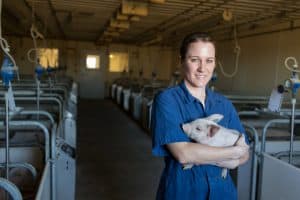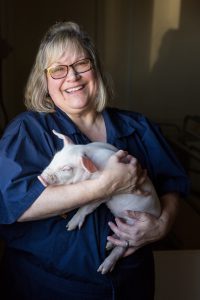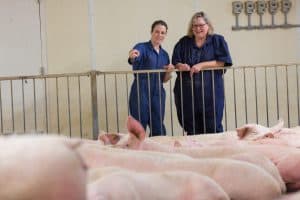MARCH 2021
bi·o·se·cu·ri·ty [noun]
Procedures intended to protect humans or animals against disease or harmful biological agents. “biosecurity risks”
Diane DeWitte and Sarah Schieck Boelke are Extension Educators with the University of Minnesota Extension. With both having educational backgrounds and experience working with swine, they can offer research-based information on a number of topics including swine production, nutrition, health, facilities, management and biosecurity.
Biosecurity is an important topic for UMASH as zoonotic diseases, which transfer from animals to people and vice versa, can be problematic for both animals and humans.The UMN Extension Swine site suggests the best way to address biosecurity is to plan. A plan will help you add the necessary controls to protect your animals, yourself and your business.
Guidelines for planning and implementing a biosecurity plan can be found on the Extension Swine page, which offers guidelines for workers, visitors, selling pigs, pest control and more. On this page there are links to four informative videos:
- Part 1: Swine Biosecurity Basics
- Part 2: All-in-all-out Management System
- Part 3: Tips for Hoop Barns and Open Areas
- Part 4: Avoid Contamination from Clothing and Footwear
Two other helpful resources are the swine newsletter and podcast which cover a number of topics and are available at your convenience.
President Lincoln supposedly once said, “If you fail to plan, you are planning to fail.”
When it comes to biosecurity and your operation, take Sarah and Diane’s advice by ensuring your farm is safe and secure with a biosecurity plan.



